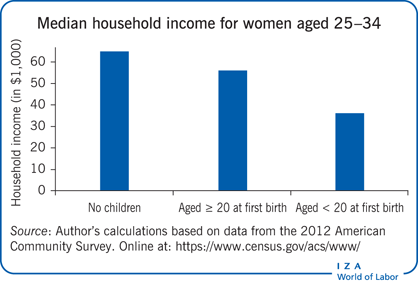Elevator pitch
It is not difficult to find statistics showing that teenage childbearing is associated with poor labor market outcomes, but why is this the case? Does having a child as a teenager genuinely affect a woman’s economic potential—or is it simply a marker of problems she might already be facing as a result of her social and family background? The answer to this question has important implications for policy measures that could be taken to improve women’s lives.

Key findings
Pros
Teens who give birth come from disadvantaged backgrounds and may have had inferior labor market outcomes anyway.
Traditional policies aimed at reducing teen pregnancy and childbearing have little, if any, impact.
Ethnographic studies find evidence of ambivalence toward pregnancy among disadvantaged teens.
Long-term factors, like greater income inequality (a potential marker for lack of opportunity/upward mobility), increase rates of teen childbearing.
Cons
Teens who become mothers have lower educational attainment and, subsequently, worse-paid jobs.
Better information and access to contraception appear to help reduce the likelihood of teen childbearing, if only to a limited extent.